‘Water-smart’ taro varieties as the future of sustainable agriculture in the Pacific: Insights from CePaCT research
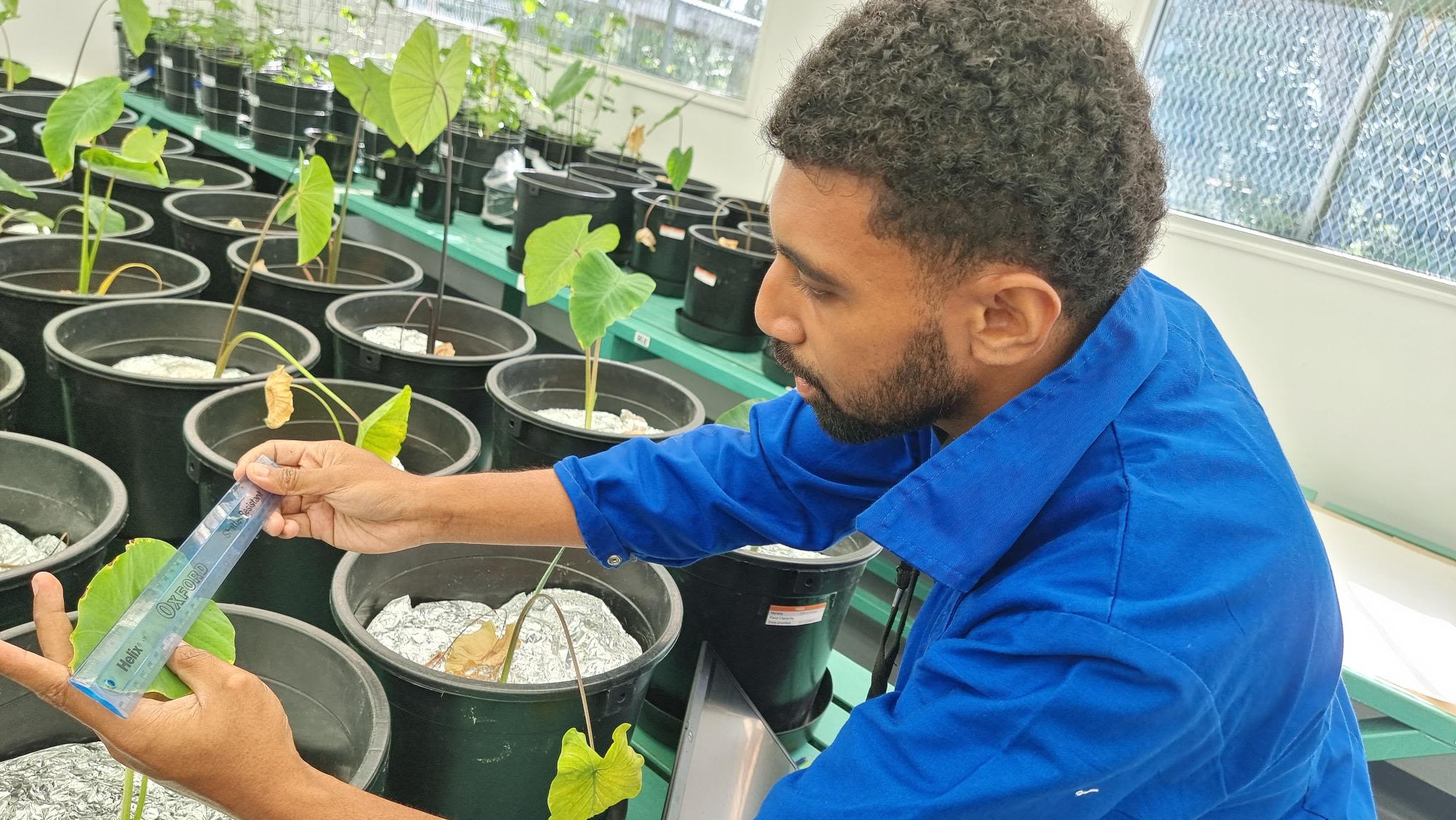
In pursuing sustainable agriculture amidst changing climate patterns, recent advancements in crop research have shed light on potential solutions. Through the project, "Identification of Drought-Tolerant Taro Varieties for the Pacific”, supported by the Australia Pacific Climate Partnership (APCP) through funding from the Australian Government, researchers at the Centre for Pacific Crops and Trees (CePaCT) diligently examined seven taro varieties for their ability to resist drought. Supported by the Ministry of Agriculture and Waterways (MOAW) in Fiji, CePaCT’s recent discoveries stand as a testament to the power of research collaboration reflecting commitment to resilience for the future of agriculture in the Pacific.
The crucial role of taro in the Pacific region
The increased frequency and severity of droughts, floods, heatwaves, and continued sea level rise will increase food and agriculture insecurity in vulnerable regions such as the Pacific. One of the most promising mitigation and adaptation strategies to counteract food and agriculture insecurity is to employ drought-tolerant crop cultivars in production systems.
Taro is a root vegetable and a staple food crop across the Pacific, and one of the most ancient and cultivated crops. However, to date, no drought-tolerant varieties have been identified in the Pacific due to a large gap in knowledge on the response of taro varieties to drought stress. Screening existing taro collections and identifying varieties tolerant to drought has become an essential study well suited for CePaCT, as it owns the largest collection of taro biodiversity in the world.
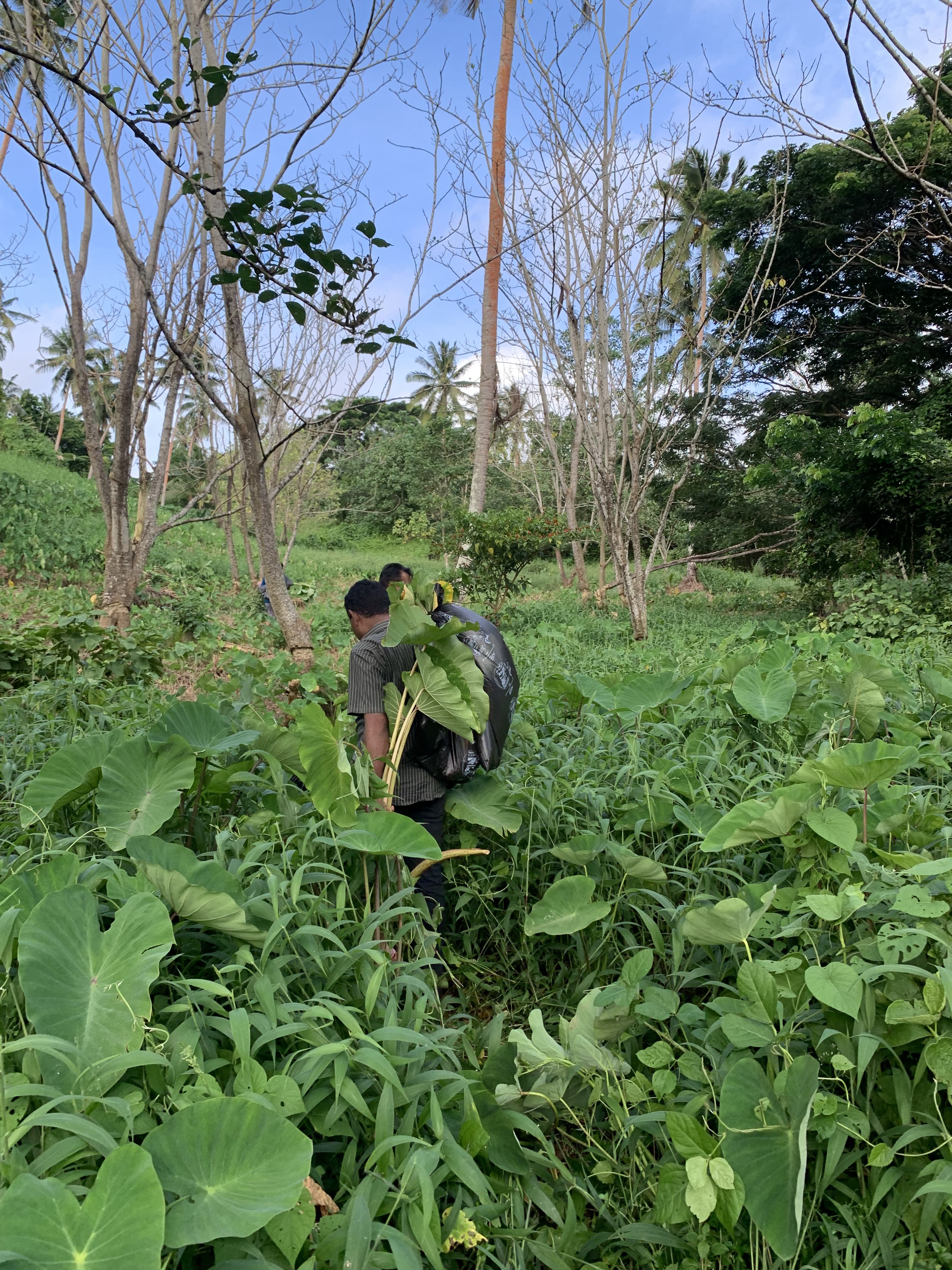
The experiment and results
The experiment, developed over five months, conducted trials in controlled screenhouse environments and real-world field conditions.
In the screenhouses, results show that all the taro varieties subjected to drought stress displayed similar response patterns. In general, the taro would decrease its total weight (biomass), specifically from the stem and leaves, to reduce water loss happening through transpiration. In addition, most would allocate more resources towards root biomass to increase their capacity to access water. However, two varieties, Tarova Loa and Uro ni Vonu, stood out demonstrating relatively better tolerance to water deficit.
During field trials, all plants suffered from desiccation over an extreme drought period of one month. Following the drought, as rainfall resumed, Tarova Loa, Uro ni Vonu, and another variety called Tarova Vula showed resilience by recovering, suggesting they may have stored resources more efficiently in their corms compared to other varieties, which potentially indicates better water use efficiency.
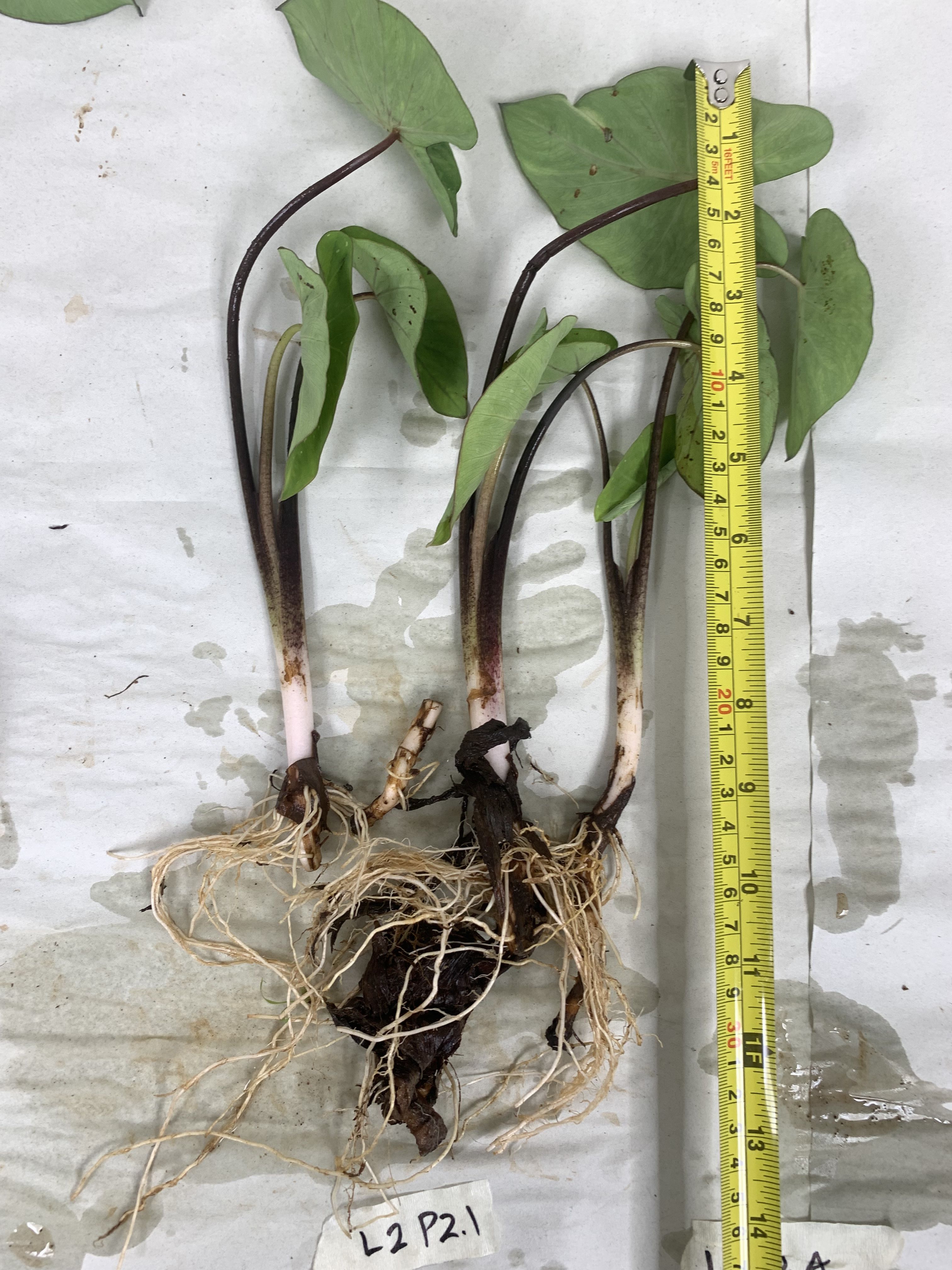
Among the seven taro varieties tested in both study contexts, it is the two taro varieties Tarova Loa and Uro ni Vonu that presented the highest ability to efficiently utilise retained water through partial stomatal closure (i.e the closing of the small openings located under the leaves, that let go of transpiration) to maintain essential physiological functions under drought stress; a decisive success factor in the experiment.
However, while CePaCT’s present research identifies promising traits of resilience in the two taro varieties, it is inconclusive to solely attribute survival to drought tolerance. Indeed, the surviving plants were suckers that grew from dormant corms rather than the originally planted specimens that the suckers originated from. This highlights the need for further investigation, calling for additional studies in controlled environments, like rainout shelters, to validate these findings.
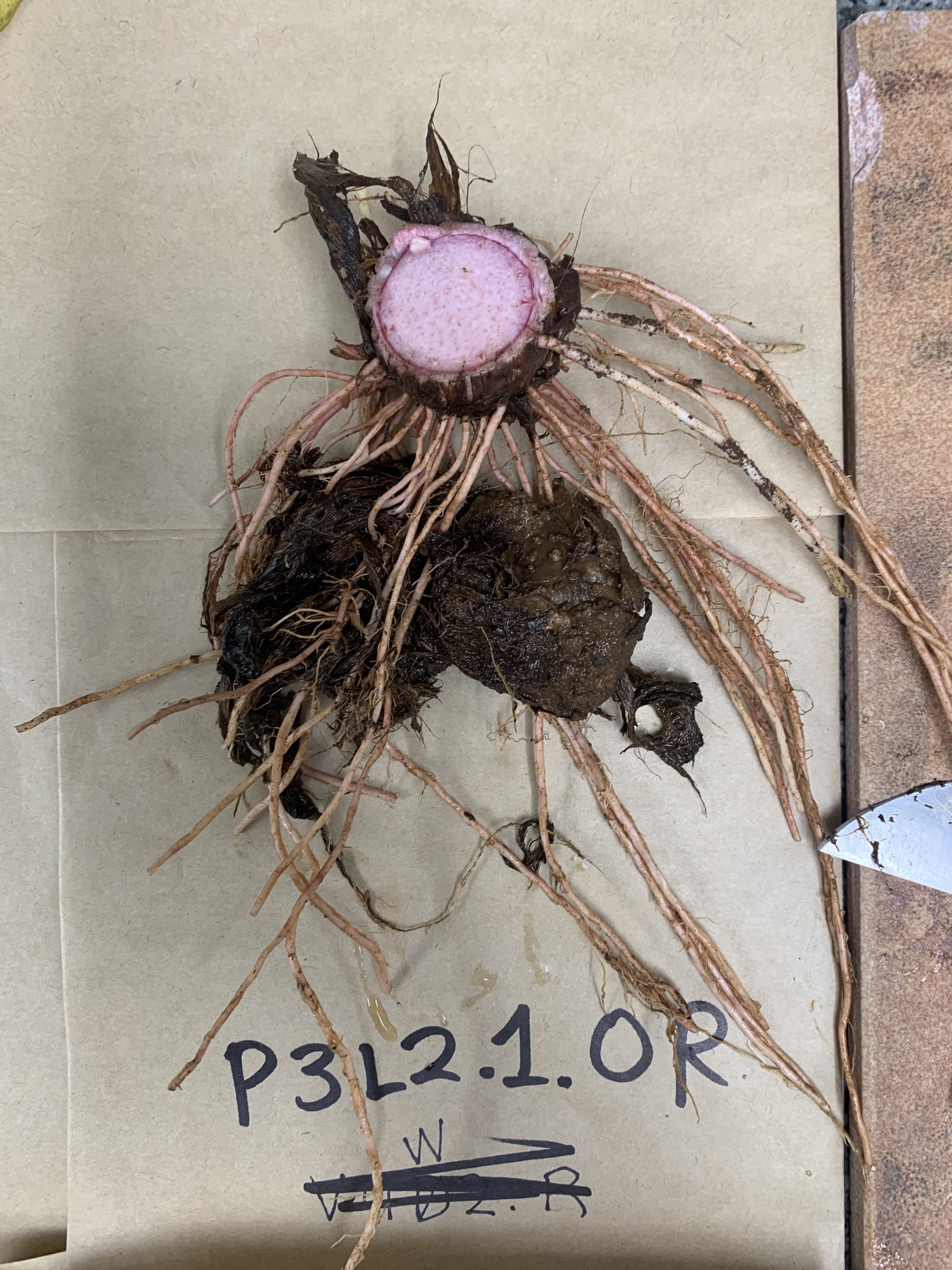
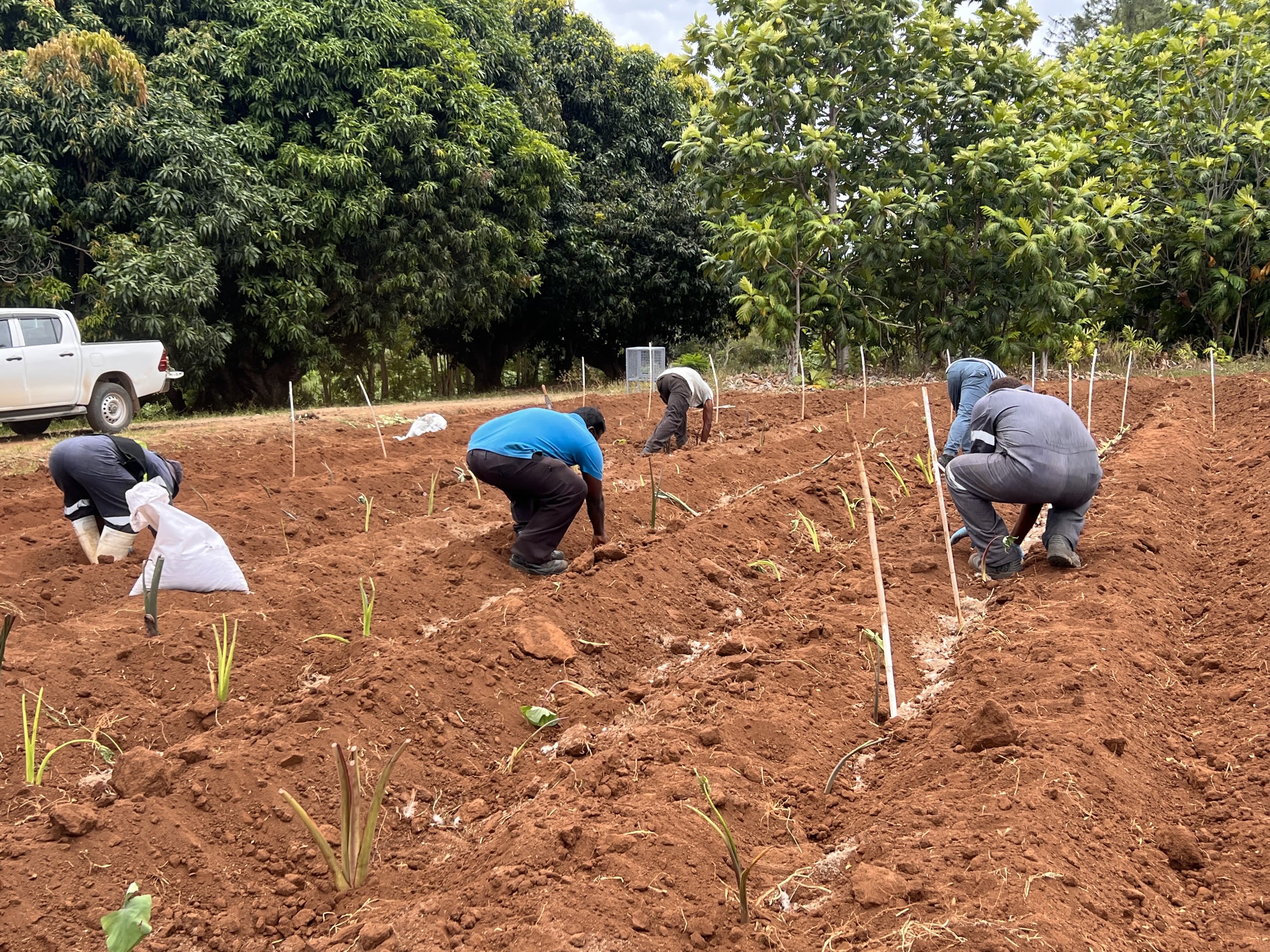
Scientific research collaboration for change
Nonetheless, the implications of the research findings for agricultural sustainability are profound and align with MOAW’s mission to empower farmers and bolster food security in Fiji and the Pacific region. By providing evidence of drought-tolerant crop varieties, the research equips policymakers and agricultural stakeholders with valuable tools to impulse transformative change across agricultural landscapes, ensuring a more resilient and sustainable future in the region.
In addition to the experiment, the study also encompassed an expedition to Taveuni, Fiji, which uncovered a rich diversity of taro varieties. Led by dedicated scientists from SPC and MOAW, the trip delved into the interior of the island, where traditional taro varieties still thrive. Beyond enriching the understanding of taro diversity, that expedition emphasised the importance of conserving these genetic resources for future generations.

About CePaCT:
The Pacific Community’s Centre for Pacific Crops and Trees (CePaCT) is an internationally recognised genebank established to assist Pacific Island countries and territories to conserve the region’s genetic resources, and to provide access to the diversity. Conservation is the core business of the centre, with priority given to the region’s staple crops: taro, yam, sweet potato, banana, cassava and breadfruit. Situated in Suva, Fiji, the centre houses over 2,000 accessions. The taro collection is particularly unique, being the largest collection of taro diversity globally. CePaCT works in collaboration with Pacific Island countries and territories, and receives generous support from development partners: the Australian Government, European Union, Food and Agriculture Organization, French Pacific Fund, Global Crop Diversity Trust, New Zealand Aid Programme and the United States Agency for International Development (USAID).
